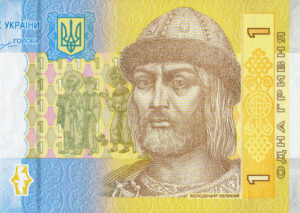
Vladimir the Great was the Prince of Novgorod, Grand Prince of Kiev and ruler of Kievan Rus’ from 980-1015. When he came into power, Slavic paganism was the predominant practice in Rus’. Early in his reign, Vladimir decided to embrace a theistic religion, and sent emissaries to evaluate several religions, including Roman (Western Rite) Christianity and Byzantium (Eastern Rite) Christianity. He even considered Islam, but rejected this religion because of its prohibition of alcohol. Said Vladimir, “Drinking is the joy of all Rus’. We cannot exist without that pleasure.”
Some accounts state that his emissaries to Germany saw no beauty in the churches there. In contrast, emissaries to Constantinople were treated to the full festival ritual of the Byzantine Church. They were quoted saying, “We no longer knew whether we were in heaven or on earth”. They told of witnessing the Divine Liturgy in Sofia Hagia, observing “such beauty, [as] we know not how to tell of it.”
Marriage to Anna
Vladimir decided to ally with the Eastern Rite church of Byzantium. He pursued marriage to Anna, the sister of Basil II, Emperor of Byzantium. The Emperor was initially reluctant to agree to his sister marrying a “barbarian” from the north. However, Vladimir agreed to convert to Christianity, and also agreed to supply 6,000 troops to help Basil II quell an uprising in the Dardanelles. In 988, Vladimir went through the ceremony of baptism in Constantinople, and on the same day, he and Anna were married. Shortly thereafter, with the help of Vladimir’s army, the revolt against Basil II was successfully defeated.
Eastern Rite Christianity in Rus’
On his return to Kiev with his new wife, Vladimir destroyed pagan monuments and built many churches. He is said to have lived the teachings of the Bible through acts of charity. He introduced courts to protect the poor, and abolished capital punishment, an unheard-of reform in this era of history. Vladimir’s legacy is the introduction of Eastern Rite Christianity to Eastern Europe and Russia, where it continues to thrive 1,000 years later. Vladimir was canonized in 1240.
St. Vladimir of Kiev is a common ancestor of the Mullins family through Elizabeth Johnston and the Bonner family through Nancy Bates. Through St. Vladimir’s wife Anna, we are descended from five emperors of the Macedonian dynasty (867-1056), from Basil I through Constantine VII, father of Basil II.
Grand Prince Iaroslav I “The Wise”
After the death of Vladimir I in 1015, our next ancestor in this line, Vladimir’s son Iaroslav, became the Grand Prince of Kiev. He married Ingegerd Olofsdotter (1001-1050), daughter of Olof Skötkonung, the King of Sweden. Sweden had a flourishing trade relationship with Kiev at the time. Ingegerd is also known as Irene, and as Saint Anna. She initiated the building of several churches, including St. Sofia’s Cathedral in Kiev, and was sainted for these activities and many good deeds.
The Royal Marriages of the Daughters of Iaroslav & St. Anna
If there was any doubt that Vladimir’s family was accepted into the royal circles of Europe by his marriage to the sister of Basil II, and his embrace of Christianity, they can be dispelled by the marriages of his granddaughters, the 3 daughters of Iaroslav and St. Anna. Elisiv married Prince Harald of Norway, and the couple became King and Queen of Norway in 1046; Anastasia married Prince Andrew of Hungary, and the couple became King and Queen of Hungary in 1046; and Iaroslav’s favorite daughter, our next ancestor in this line Anne, married King Henry I of France. Each of these men was well known to Iaroslav: Prince Harald, Prince Andrew and Prince Henry all fled their respective countries in the midst of violent succession battles, and Iaroslav had welcomed the three exiled Princes at his court. Elisiv and Anastasia met their respective future spouses there.
When King Henry I of France died in 1060, Queen Anne ruled France as regent for her young son Philip I from 1060-1066. She was the first queen of France to rule as a regent. Read more about our ancestor Queen Anne of Kiev here.
